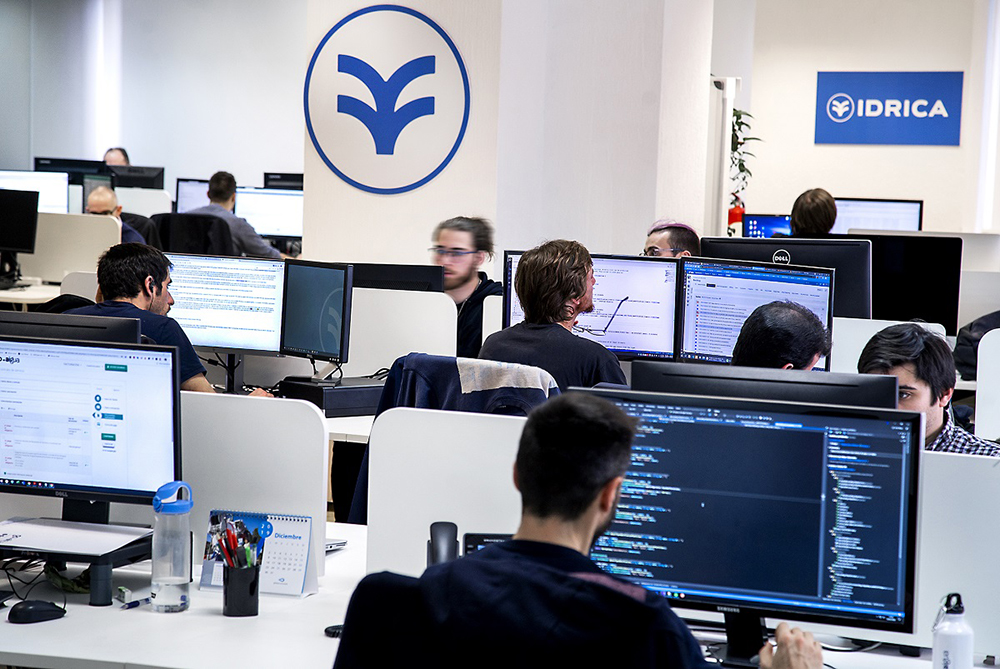The current scenario of uncertainty has accelerated the adoption of digital twins in the water sector. Their application in drinking water distribution, sanitation and sewerage systems is picking up speed across the globe. In 2022, and over the next few years, digital twins are set to be one of the most widely used tools to tackle new challenges.
Yet, digital twins are no longer just a good idea for the future. In fact, many of the most innovative international utilities have already included the implementation of digital twins in their strategic plans and have put down specific actions on paper, thus tying in with their commitment to digital transformation. “Once processes have been digitally transformed and infrastructures have been equipped with sensors, the next logical step is to extract value from all this data. Digital twins are one of the best tools to do this, as they deliver a holistic, cross-cutting vision of all the data they compile”, stated Pilar Conejos, Digital Twin Manager at Idrica.
According to the expert, their commissioning must include the following components: a platform integrating all the information collected from assets and infrastructure, hydraulic models and advanced analytics, and a powerful, user-friendly dashboard system. However, digital twins go way beyond simply simulating scenarios, with one of their main features being the development of use cases, understood as the ability to solve problems and optimize day-to-day operations.
Their successful deployment “will require utilities to overcome a number of challenges in the coming years, which may act as a barrier to market uptake”, highlighted Pilar Conejos. These challenges include insufficient data quality and its location in isolated systems that are difficult to connect, and the intrinsic complexity of running a simulation model that must be kept permanently up-to-date and must operate in real time”. In addition, “investments must go hand in hand with an innovative organization and culture if they are to be successful. If there is something implicit in digital twins, it is a new way of working”, concluded Idrica’s expert.
Digital twins: transforming the real world through the virtual
The most widely accepted definition of digital twins is perhaps that they are a virtual copy of the water supply system, simulating how it behaves.
As a proxy for real behavior, digital twins help us to make better decisions thanks to the holistic view they provide of the system and their ability to simulate real and fictitious scenarios. They anticipate the response of the network to any circumstance affecting operations, whether it has occurred before or not, helping utilities to assess different scenarios. To do this, both the physical and dynamic aspects of the system must be represented, i.e., the virtual representation of physical assets must be combined with the simulation of their behavior in the digital environment.
According to Idrica’s experts, digital twins need large amounts of data and information from the physical system to function. In other words, the development of use cases and practical applications depends on sensors and the information provided by the digital systems employed, such as SCADAs, GIS and CMMS. Today, many companies have this information, so the next challenge for them is to concentrate, combine and standardize it into a single platform, which serves to feed the digital twin with real-world data.
Four benefits for the water sector, according to Idrica
Resilience.
Digital twins improve the ability to adapt quickly and safely to any circumstance, whether it has happened before or not. This includes emergencies, health alerts and climate change-related events.
Testing new ideas and changes virtually, before making a decision in the real system, reduces risks, time and costs. Digital twins anticipate problems and identify the measures needed to prevent emergencies and minimize their consequences. In short, they ensure that, even in critical situations and complex distribution systems, the water supply will remain available 24/7.
Efficiency.
Digital twins can help to optimize systems now and in the future from an operational and planning standpoint. Thanks to the holistic view they provide, decisions are made by considering their impact on the different processes occurring in the system.
For example, energy costs can be reduced by establishing the best pumping schedules taking into account the hourly price of energy, whilst also keeping the system’s hydraulic parameters under control. Energy consumption can also be lowered through more efficient asset operation and system planning, taking into account energy use associated with the design of new infrastructure.
Customer-centric management.
Twenty-first-century citizens are demanding more information and better service, and they are also an essential part of the management of water distribution systems. Accordingly, digital twins need to engage citizens in order to provide them with information and to adapt water system management to cater for their needs. Thus, they can receive information on service disruptions in advance, whether due to planned interventions in the network or to an emergency. In addition, the operation of the system can be adapted depending on the needs of critical users, such as hospitals, to ensure supply in any possible scenario.
Yet that is not all. The challenges we are currently facing, such as increased demand due to urban growth and the scarcity of water, require water utilities and citizens as end users to work together. For example, providing customers with access to detailed information about their consumption will lead to better actions and awareness of responsible water use policies.
Sustainability.
There is strong support for the new concept of sustainable cities. The objective is to adapt to climate change through planning, optimal infrastructure management and citizen participation. The technology used in urban water systems means that they can be operated safely and efficiently, with the aim of reducing water and energy consumption. They also promote two-way communication between utilities and citizens, who can now address new challenges and receive information on how their actions improve resource management.
Read more Idrica Articles and News on H2O Global News. Do you have an article or video that you would like to share? Submit your article here or keep up with the latest news from the water industry and wastewater industry by subscribing to our weekly newsletter







